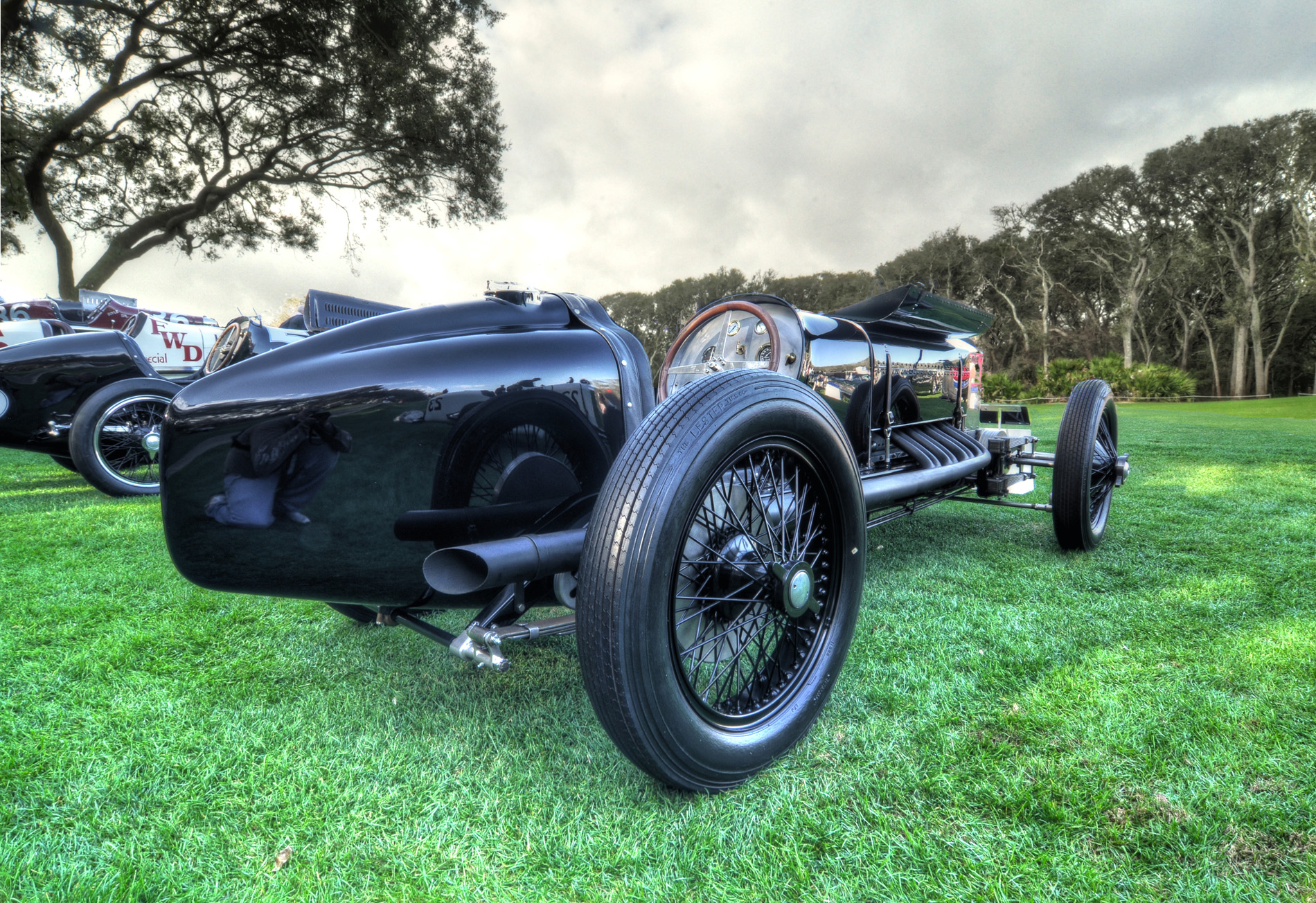
This 1927 Cooper-Miller Indy car was built by Earl Cooper and Harry Miller under the sponsorship of the Buick Motorcar Company and is known as the Cooper-Miller.
Its first Indianapolis 500 race was in 1927 where it was piloted by Peter Kreis to a 17th place finish. Between 1927 and 1950, the car would compete in 19 of the 23 Indy races. The most successful finish was 10th place in 1930 when it was known as the Gauss Front Drive driven by Joe Huff.
The car also participated in the 1927 Italian Grand Prix where it finished 3rd driven by Earl Cooper and Peter Kreis.
The car is powered by a 91 cubic inch 8-cylinder engine breathing through four Miller Dual Throat carburetors. It produces 167 horsepower powering the front wheels. There are mechanical drum brakes and live axle suspension.
Overview
- Production Year: 1927
- Manufacturer: Harry A. Miller, in collaboration with the Cooper Engineering Company
- Class: Race car
- Body Style: Open-wheel race car
Design and Specifications
- Engine:
- The 1927 Cooper-Miller was powered by a supercharged straight-eight engine.
- The engine had a displacement of approximately 1.5 liters (91 cubic inches).
- It produced around 150 to 200 horsepower, an impressive figure for the time, thanks to its advanced engineering and supercharging.
- Transmission:
- The car featured a 3-speed manual transmission, which provided the necessary gearing for competitive racing.
- Chassis:
- The Cooper-Miller utilized a lightweight and sturdy tubular chassis, designed for optimal performance and agility on the racetrack.
- Suspension:
- Front: Solid axle with semi-elliptic leaf springs.
- Rear: Live axle with semi-elliptic leaf springs, ensuring robust handling and stability at high speeds.
Performance
- Top Speed: The Cooper-Miller could reach speeds in excess of 130 mph (209 km/h), making it one of the fastest race cars of its era.
- Acceleration: The car offered rapid acceleration, crucial for competitive starts and overtaking during races.
- Handling: With its well-tuned suspension and lightweight construction, the Cooper-Miller provided excellent handling and responsiveness, essential for navigating the challenging race circuits of the time.
Design Features
- Bodywork:
- The Cooper-Miller featured a sleek, aerodynamic design with a focus on reducing drag and maximizing speed.
- The body was typically made from lightweight aluminum, enhancing its performance capabilities.
- Key design elements included a streamlined nose, exposed wheels, and a low, aggressive stance, embodying the quintessential look of a 1920s race car.
- Interior:
- The interior of the Cooper-Miller was Spartan and functional, with minimal instrumentation and controls to keep the driver focused on the race.
- It featured a simple, driver-centric cockpit with essential gauges for monitoring engine performance and speed.
- Customization:
- As a race car, the Cooper-Miller was often customized and fine-tuned by teams and drivers to suit specific racing conditions and preferences.
Legacy
- Historical Significance:
- The Cooper-Miller is a significant model in the history of American racing, showcasing the advancements in engineering and design achieved by Harry A. Miller and his team.
- It represented the cutting-edge technology of the 1920s and helped to set new standards in race car performance and design.
- Racing Pedigree:
- The Cooper-Miller cars achieved numerous victories and podium finishes in prestigious racing events, including the Indianapolis 500.
- Driven by legendary racers such as Frank Lockhart and other top drivers of the era, the Cooper-Miller cars were highly competitive and respected in the racing community.
You may purchase a print of the 1927 Cooper-Miller in our dElegance 2013 online gallery.

